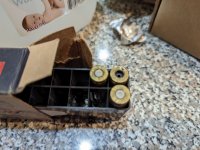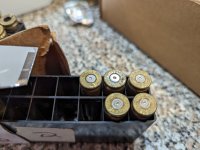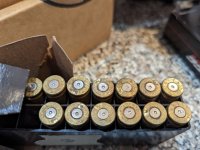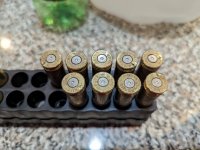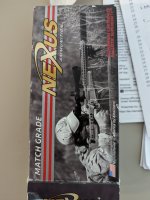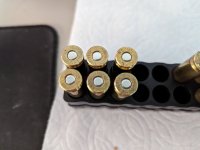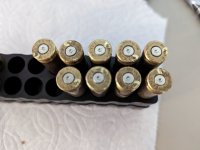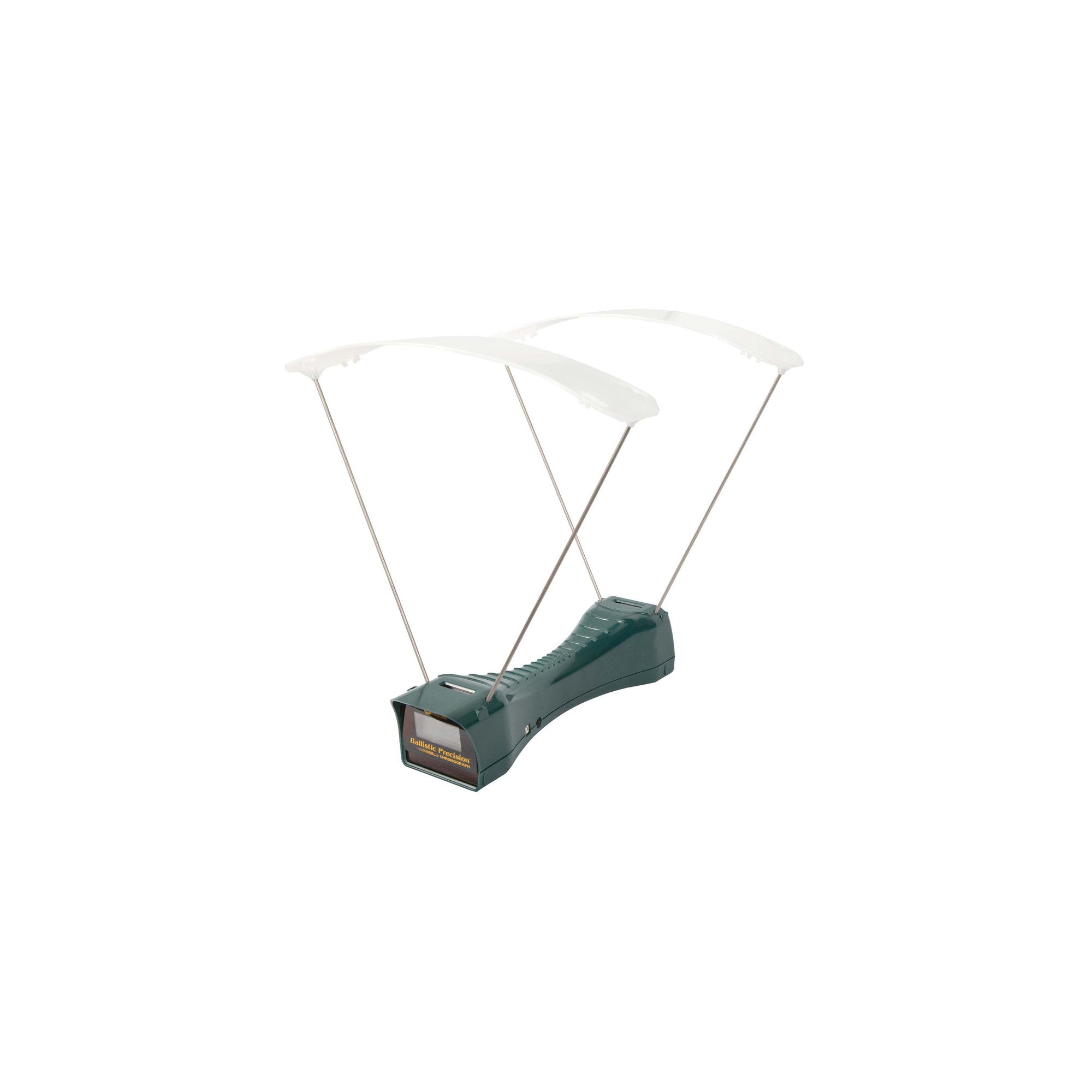Hey guys, long time reader: just joined because this is driving me bonkers in my reloads.
I've been running a 16" christensen Arms G2 rifle at the range, working out a setup with a maximum point blank range, etc. but for fun I like to work on my reloads to try and maximize muzzle velocities, and change the "curve" of the bullet's path to maximize my "I can just aim like a dummy and still hit" range.
For example: with a MV of 2525 (what I'm managing with my own reloads), I can point and click out to 275 yards and reliably hit a 4inch target without thinking about it (and I've verified it having a good ol' time plenty of times).
Recently, however, I was bringing a new box of reloads, testing various powder charges (Varget), and I was ranging around 2520-2530 on a hot day here in Vegas.
I had another "control" box of Nexus Ammo, something I picked up a while back, and the darned thing was shooting 2770-2780 fps on my rig without a problem (5 rounds in a row, it managed to maintain those speeds!).
This feels like one of those moments in reloading where you maybe accidentally "hit" that perfect powder charge, or primer, and suddenly everything starts to get really tight and zeroed in. Problem is: its with a manufacturer's load, and I have no idea how to replicate it with my reloads! I have the exact same bullet as they use (Sierra Matchking 175 grain HPBTs), and I'm happy to use the exact same brass (you bet your butt I will once I've shot them all out!), but I have no idea of the powder composition to match this.
I was running my OAL to around 2.810 because of my maximum magazine length (this is an AR-10 gas gun if I didn't mention it before). I measured their OALs and they were running a tad shorter at 2.798-2.805 in the 18 rounds I tested. And the primary reason I was TRYING to run as long of an OAL as I can, is because when I put 44 grains of Varget in, I was getting serious pressure concerns. Even popped a primer, so I decided to back off. My results were as follows:
44.4 grains varget - Popped primer, obvious flattening of primers (with the classic black look of doom)
43.0 grains varget - Obvious flattening of primers, but no popped out primers
42.0 grains varget - shot the tightest groups I had, but I THINK are still slightly showing signs of pressure, with ONE random cartridge dropping a primer. Not sure if that's randomly the case being loose BEFORE hand, or if I'm STILL over-pressured?
41.0 grains varget - Groups opened up slightly, but no signs of pressure... though now I'm starting to second-guess myself, and I'm maybe not great at spotting the pressure beyond the VERY obvious "dropping primers" level.
I'm fairly new to precision reloading. I've reloaded plenty, but the precision part is new to me. I know it may be silly to some to "precision" chase with an AR-10 gas gun, but my wife and I love having things capable out to as close to 400m as we can get without "holding over", so I really wanted to pursue this if possible.
If anybody has any tips on figuring out what on earth these guys did to achieve these muzzle velocities, or perhaps maybe I'm overlooking huge parts of reloading that I'm just whiffing on? For example: I'm measuring cases before I reload: and making sure they're all under 2.005", but sometimes cases are quite a bit under that, and I don't do anything different: I just load em the same as long as they're under the recommended trim length. Then when I seat, I do it based on the magazine maximum length (I manually measured it with a caliper before I realized magpul had posted it somewhere haha). So I'm achieving consistent OAL (but good lord: with a gas gun, how on earth WOULD you even test the jam, or test the lands? I've only seen it done on bolt actions). I'm using the same, CCI large rifle primers, No 200. Most of my brass is my old once-fired Hornady brass. Does anybody see any major issues I need to focus on more, or perhaps have an insight as to the powders these guys use (or whatever they use to achieve these speeds?)? I'm hoping to find any way I can to run lower pressures, but with higher MV. Any help would be greatly appreciated
And I apologize if this ran on too long: I just didn't want to leave anything out if possible.
Additionally: I've added pictures. My previous posting of this topic seems to have vanished (the top right shows "0" messages for me... unsure why?). I realize now, looking carefully, that EVERY case is showing pressure signs, even the nexus arms ones. Still, I'm hoping that I can at least ACHIEVE the "relative" higher MV's as Nexus with my own reloads, if that makes sense (while lowering overall pressure to remove those obvious signs - yes I realize those are over-pressure, in some cases by quite a bit... I'm doing my best to learn here, and improve as I go). Note: Nexus picture is named appropriately. The loads 1-4 are DECREASING in pressure (load 1 was the 44.4 grains, down to 41 grains).
I've been running a 16" christensen Arms G2 rifle at the range, working out a setup with a maximum point blank range, etc. but for fun I like to work on my reloads to try and maximize muzzle velocities, and change the "curve" of the bullet's path to maximize my "I can just aim like a dummy and still hit" range.
For example: with a MV of 2525 (what I'm managing with my own reloads), I can point and click out to 275 yards and reliably hit a 4inch target without thinking about it (and I've verified it having a good ol' time plenty of times).
Recently, however, I was bringing a new box of reloads, testing various powder charges (Varget), and I was ranging around 2520-2530 on a hot day here in Vegas.
I had another "control" box of Nexus Ammo, something I picked up a while back, and the darned thing was shooting 2770-2780 fps on my rig without a problem (5 rounds in a row, it managed to maintain those speeds!).
This feels like one of those moments in reloading where you maybe accidentally "hit" that perfect powder charge, or primer, and suddenly everything starts to get really tight and zeroed in. Problem is: its with a manufacturer's load, and I have no idea how to replicate it with my reloads! I have the exact same bullet as they use (Sierra Matchking 175 grain HPBTs), and I'm happy to use the exact same brass (you bet your butt I will once I've shot them all out!), but I have no idea of the powder composition to match this.
I was running my OAL to around 2.810 because of my maximum magazine length (this is an AR-10 gas gun if I didn't mention it before). I measured their OALs and they were running a tad shorter at 2.798-2.805 in the 18 rounds I tested. And the primary reason I was TRYING to run as long of an OAL as I can, is because when I put 44 grains of Varget in, I was getting serious pressure concerns. Even popped a primer, so I decided to back off. My results were as follows:
44.4 grains varget - Popped primer, obvious flattening of primers (with the classic black look of doom)
43.0 grains varget - Obvious flattening of primers, but no popped out primers
42.0 grains varget - shot the tightest groups I had, but I THINK are still slightly showing signs of pressure, with ONE random cartridge dropping a primer. Not sure if that's randomly the case being loose BEFORE hand, or if I'm STILL over-pressured?
41.0 grains varget - Groups opened up slightly, but no signs of pressure... though now I'm starting to second-guess myself, and I'm maybe not great at spotting the pressure beyond the VERY obvious "dropping primers" level.
I'm fairly new to precision reloading. I've reloaded plenty, but the precision part is new to me. I know it may be silly to some to "precision" chase with an AR-10 gas gun, but my wife and I love having things capable out to as close to 400m as we can get without "holding over", so I really wanted to pursue this if possible.
If anybody has any tips on figuring out what on earth these guys did to achieve these muzzle velocities, or perhaps maybe I'm overlooking huge parts of reloading that I'm just whiffing on? For example: I'm measuring cases before I reload: and making sure they're all under 2.005", but sometimes cases are quite a bit under that, and I don't do anything different: I just load em the same as long as they're under the recommended trim length. Then when I seat, I do it based on the magazine maximum length (I manually measured it with a caliper before I realized magpul had posted it somewhere haha). So I'm achieving consistent OAL (but good lord: with a gas gun, how on earth WOULD you even test the jam, or test the lands? I've only seen it done on bolt actions). I'm using the same, CCI large rifle primers, No 200. Most of my brass is my old once-fired Hornady brass. Does anybody see any major issues I need to focus on more, or perhaps have an insight as to the powders these guys use (or whatever they use to achieve these speeds?)? I'm hoping to find any way I can to run lower pressures, but with higher MV. Any help would be greatly appreciated
And I apologize if this ran on too long: I just didn't want to leave anything out if possible.
Additionally: I've added pictures. My previous posting of this topic seems to have vanished (the top right shows "0" messages for me... unsure why?). I realize now, looking carefully, that EVERY case is showing pressure signs, even the nexus arms ones. Still, I'm hoping that I can at least ACHIEVE the "relative" higher MV's as Nexus with my own reloads, if that makes sense (while lowering overall pressure to remove those obvious signs - yes I realize those are over-pressure, in some cases by quite a bit... I'm doing my best to learn here, and improve as I go). Note: Nexus picture is named appropriately. The loads 1-4 are DECREASING in pressure (load 1 was the 44.4 grains, down to 41 grains).

